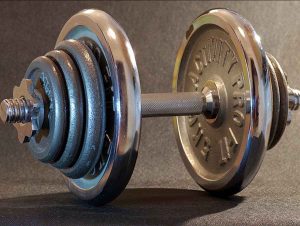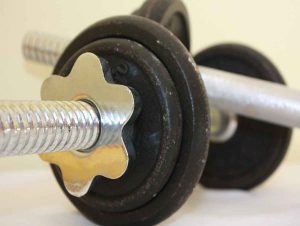Should I Join a Gym or Workout at Home?
Are you contemplating whether working out at home or in the gym is better? If yes, this is the content you must read.
Deciding whether to join a gym or work out at home is a common dilemma for many fitness enthusiasts and beginners. Regular exercise is important for maintaining good health, managing stress, and enhancing overall well-being.
However, choosing the right environment for your workouts can significantly impact your fitness journey. In this post, we will discuss the merits and demerits of both options to help you make an informed decision that aligns with your personal fitness goals and lifestyle.

Should I Join a Gym or Workout at Home?
To make a better decision on this, we will get to know the benefits of each. So, let’s start by discussing the benefits you will get from joining a gym. Relax and enjoy the read so you can make the right decisions.
Benefits of Joining a Gym
Access to a Variety of Equipment: In gyms, you get access to a wide range of machines, free weights, and specialized equipment that you might not have at home. This allows you to target different muscle groups and keep your workouts engaging and diverse.
Professional Guidance and Classes: Many gyms provide access to personal trainers and group fitness classes. These resources can be invaluable, especially for beginners who need guidance on proper form and workout routines.
Motivating Environment and Social Interaction: Gyms often create an environment that motivates you to push harder and stay consistent. The presence of like-minded individuals can inspire you and provide a sense of community.
Structured Workout Routines: Gyms offer a variety of classes and programs that can add structure to your fitness regimen, making it easier to stay on track and achieve your fitness goals.
Drawbacks of Joining a Gym
Membership Costs: Gym memberships can be expensive, and additional costs for personal training or special classes can add up quickly.
Commute and Time Constraints: Traveling to and from the gym can be time-consuming, especially if it is not conveniently located. This commute time can be a deterrent for some people.
Potential for Overcrowding: Gyms can become crowded during peak hours, making it challenging to access the equipment you need and complete your workout efficiently.
Possible Intimidation for Beginners: Gyms can be intimidating for newcomers who may feel self-conscious or unsure about how to properly use most of the gym equipment.
Benefits of Working Out at Home
Convenience and Flexibility: Working out at home eliminates the need for travel, allowing you to exercise whenever it fits your schedule. This flexibility can make it easier to stay consistent.
Cost Savings: Home workouts can be more cost-effective in the long run. You can invest in basic equipment like dumbbells, resistance bands, and a yoga mat without the ongoing expense of a gym membership.
Privacy and Comfort: Exercising at home provides a private and comfortable environment, which can be particularly appealing for those who feel self-conscious in a gym setting.
Customizable Workout Space: When working out at home, you have complete control over your workout environment, allowing you to create a space that suits your preferences and needs.
Drawbacks of Working Out at Home
Limited Access to Equipment: Unless you are willing to invest heavily, your home gym may lack the variety of equipment available at a commercial gym, potentially limiting your workout options.
Lack of Professional Guidance: Without access to trainers or classes, you might miss out on professional guidance, which can be important for proper form and preventing injuries.
Potential for Distractions: Home environments can be filled with distractions, from household chores to family members, making it harder to stay focused on your workout.
Motivation Challenges: Staying motivated can be more challenging when working out alone at home. The lack of a social environment may make it easier to skip workouts.

Factors to Consider When Making Your Decision
When deciding on whether to workout at home or in the gym, consider the following factors.
Personal Fitness Goals: Consider your specific fitness goals and which environment is more conducive to achieving them. For example, if you are training for a bodybuilding competition, a gym with extensive equipment might be more suitable.
Budget Considerations: Consider your budget and determine whether you can afford a gym membership or prefer the cost savings of working out at home.
Schedule and Lifestyle: Think about your daily schedule and lifestyle. If you have a busy routine, the convenience of home workouts might be more practical.
Experience Level and Need for Guidance: Assess your experience level and whether you need professional guidance. Beginners might benefit more from the support and structure of a gym.
Hybrid Approach: Combining Gym and Home Workouts
Combining gym and home workouts can offer the best of both worlds. You can enjoy the variety and social aspects of the gym while taking advantage of the convenience and cost savings of home workouts.
For instance, you might go to the gym for strength training sessions a few times a week and do cardio or flexibility exercises at home. This approach allows you to maintain flexibility in your routine while accessing specialized equipment when needed.

Conclusion
Both gym memberships and home workouts have their unique advantages and disadvantages. The best choice depends on your individual needs, goals, and circumstances.
By considering the factors discussed in this post, you can make an informed decision that supports your fitness journey.
Remember, the most important aspect is staying consistent and finding a routine that you enjoy and can sustain in the long term. Whether you choose the gym, home workouts, or a combination of both, prioritizing your health and fitness is what truly matters.
Editor’s Picks
25 Different Types of Gyms (A Must Read Before You Get Started With Your Fitness Routine)